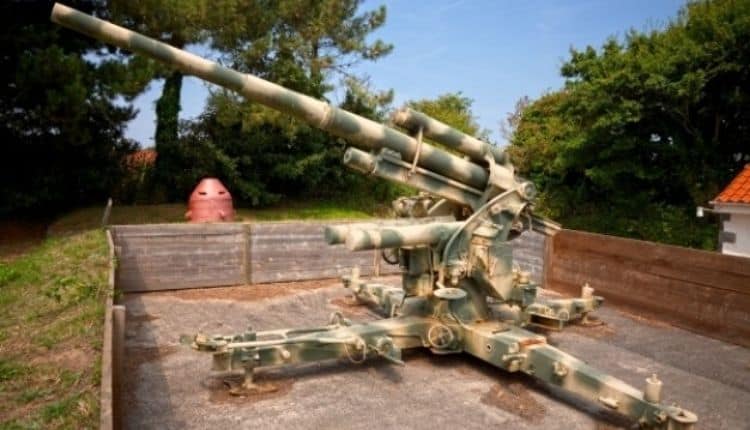How Has The Defence Sector Adopted To Technology?
In today's times, while all sectors have readily accepted technology, the defence sector hasn't been left behind in the race at all. Over the days, they have been equipping themselves with latest developments and have been advancing at a great scale
In India, though expansive and secure defence networks across tri-forces have been built, yet most of these are old and dilapidated. Experts believe that there is a pressing need to Unify, Fortify, and Modernise India’s defence networks with strategic capabilities like Joint-ness and Interoperability of Networks, Technology-led security solutions, and Cybersecurity architecture, to achieve the Winning Edge.
In an exclusive interaction with Express Computer, KS Rao, CEO, Network Services and Software Business, STL, gives us a deeper understanding of how technology is the need of the hour.
Edited excerpts:
Where does India stand globally in the definitive shift towards digital transformation in defence?
Armed forces, all over the globe, are digitalising and building network-centric defence ecosystems to bolster combat readiness and modernise battlefield operations. If we see countries like the US, UK, they have multi-billion dollar plans for initiatives like autonomous technologies, war clouds and defence ICT modernisation. These initiatives were preceded by a single-minded focus on building very robust defence networks.
| Country | Technology Prowess | Enabling Network |
| Israel | Israel’s IDF uses AI/ML and Big Data for enhanced battlefield performance and streamlined military operations and robotic border surveillance | Enabling IDF’s digital supremacy vision is the Digital Army Program (DAP) that provides situational awareness and a strong communication network for voice, data, and video transmission |
| United States | The U.S. DoD’s aims at building the war cloud for modernising defence’s entire IT infrastructure | Enabling DoD’s war cloud vision is the Joint Enterprise Defense Infrastructure (JEDI) program that will transform the military’s cloud computing systems to support warfighters on the tactical edge |
| United Kingdom | With their new Defence Technology Framework and Defence Innovation Priorities programs, UK’ MoD intends to enhance capability across internal business functions and military operations | Both these programs will be supported by UK MoD’s Defence Information Infrastructure (DII), which a secure military network |
Indian defence forces have embraced technology with open arms and have made tremendous progress in the last two decades. With a continual focus on building a formidable defence infrastructure, India has built a series of expansive and secure defence networks across tri-forces including a robust cyber & space command (DCA & DSA).
These essentially form the communication backbone of the forces and are the launchpad for the next generation of defence networks, but enhancements in the areas of Jointness, Technology led security solutions and ISR (Intelligence, Surveillance & Reconnaissance), interoperability and cybersecurity are now imperative.
What is the importance of Defence ICT and Digitisation for India?
Warfare is changing and so is the threatscape, especially for India. The warfare paradigm is now multifaceted – cyber warfare, biowarfare and strategic warfare. Additionally, we are witnessing collusive threats from neighbouring nations, border intrusions across 15K Kms of terrestrial borders and the new phenomenon of multi-front warfare spanning borders, electronic and cyber domains. For example, the recent turbulence with a neighbouring country involves intrusions and strong-arming basis the purported strength of their defence forces. To combat such explicit and implicit threats, our defence forces have to build strategic deterrence and advanced combat capabilities that leverage the power of digital technologies.
Critical outcomes like Sovereignty and the Winnability of the country are hinging on defence digitisation. This calls for a focus on
- Digital defence capabilities powered by technology-enabled military strategy.
- Network-based integration across Tri-forces and Paramilitary forces
- Sensing and surveillance systems
- Big data and analytics for augmenting intelligence and ISR
- AR/VR based troop training
- Next-gen combat capabilities like IoBT (Internet of Battle Things)
Where is Indian Airforce on the digital readiness curve currently? What makes AFNET 2.0 important in the defence sector?
AFNET 1.0 forms the backbone for the overall ICT infrastructure of the IAF. The Indian Air Force (IAF) developed the AFNET 1.0 with an investment of INR 1077 crore in 2010. The current state Air Force Network (AFNET) is an Indian Air Force owned, operated and managed digital information grid that acts as a backbone for communication for and as an integration point with other modes of communication. The network incorporates the latest traffic transportation technology in form of IP packets using MPLS technology.
On the other hand, AFNET 2 will bolster the strength of the IAF on the following accounts:
- Superior cybersecurity
- Service-oriented architecture
- Software-defined, converged network
- Defence specific Applications like big data analytics, forensic analysis tools
AFNET 1.0 project lifecycle got completed in 2017, but the IAF opted for subsequent extension of support upto 2020, post which AFNET 2.0 would be operationalised. Owing to its future-ready architecture and high level of automation, AFNET 2.0 can be a game-changer.
How can such infrastructure be built that would help the defence sector?
As elaborated above, the need for defence digitisation is a pressing need. India has to start this journey of defence network modernisation and Jointness now, to build a digitally supreme force in the future. To build this formidable digital infrastructure, we need to have an ecosystem mind-set and re-imagine the defence infrastructure in different stacks.
- Defence networks need to be unified and modernised to enable advanced use cases for digital defence use cases. There needs to be seamless flow of information, data-based decision making and tight security protocols at the network level
- Allied technologies like sensor ecosystem, surveillance, unmanned vehicles and digital twins should be incubated in a staggered manner to use the Joint and Modernised network at a strategic weapon
- Defence specific use cases for core areas like border security, critical premise security, Internet of Battle Things (IoBT) should be conceptualised and operationalised as per a defined roadmap



